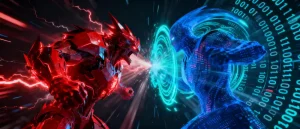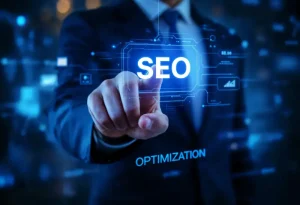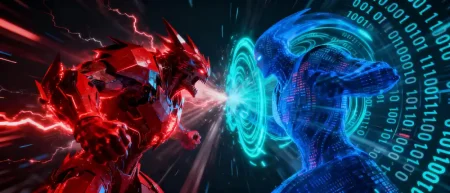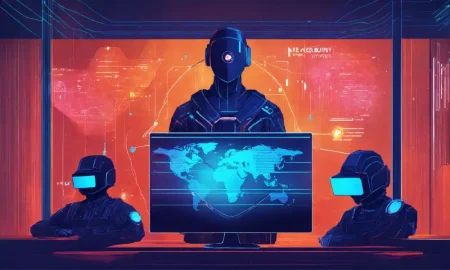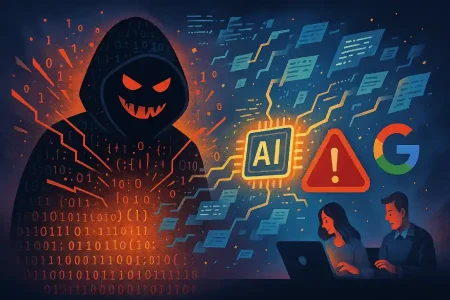Meta’s grand plan for AI-crafted ads hides an open secret – and it’s not just about selling more colas but completely disrupting the advertising world says Satyen K. Bordoloi.
During Diwali of 2021, Shah Rukh Khan broke the internet, not for a film, but because he had been promoting hundreds of local shops simultaneously. Cadbury used AI to transform King Khan, chameleon-like, into a neighbourhood influencer wherever you watched him in India. In Mumbai, he extolled the virtues of a dusty kirana shop; in Delhi, a bustling snack store. This hyperlocal wizardry achieved via AI wasn’t just delightful; it let wafts of a future narrative whose first act is taking shape now.
Yet, even the most devout among us underestimated just how hyper, how meta, how absurdly intimate this future would become. This became evident after Meta, nee Facebook, announced something benign – automating ad creation – but which carries the rumbles of a tectonic shift for the ad industry. Forget evolution; this is a new Big Bang for the ad world. So, strap in tight, Dorothy, because Kansas is going bye-bye as we accelerate into an ad-world where the wizard of Oz is an algorithm that loves masticating on your data.
META’S META ANNOUNCEMENT
As first reported by the Wall Street Journal, Meta, by the end of 2026, will begin rolling out a tool where brands can upload a simple product image and a budget and Meta’s AI will create slick videos with compelling copy to make ads that look like a million dollars. That’s not it. The tool will then find the perfect audience across Facebook and Instagram’s billions for advertising the brand.
But the real magic lies in real-time, AI-powered personalisation. Thus, if you are viewing a car commercial in a snowy mountain town, you’ll see a car conquering icy roads, while I, in my urban bubble, will see the same car gliding through rain-soaked city streets. The ad morphs, chameleon-like as Shah Rukh in the Cadbury ad, to match your immediate reality.
META’S OPEN SECRET NOT IN THE NEWS
Yet, all the discussion about this news misses a simple truth: this audacious plan demands Meta master AI that generates videos. Having worked in a text-to-video startup last year, I can attest to the Herculean complexity of the task because this AI doesn’t just have to stitch clips; it must understand physics in pixels, figure the coherence of a narrative, subtlety of human expression and million other things that make motion, and an ad, believable.
After a costly detour into the metaverse wilderness, Meta pivoted to AI with the fury of a scorned giant. It must now pour billions into the text-to-video chain, the holy grail of generative AI. This is Meta’s attempt to dominate the engine of future visual storytelling, in which Google seems to have taken an enormous lead.
GOOGLE’S VE(O)RY LOUD RESPONSE
Google is the reigning champion of the ad world, and AI. For three years now, they’ve watched the generative AI explosion, seen text, images, audio – all conjured from the digital ether, created using ideas like the transformer architecture, which they discovered. But in May this year, they stole some of the thunder back with Veo 3. Google’s latest video generation model has left competitors like OpenAI’s Sora in the dust. Veo 3’s ability to combine image, video, and audio into complex, coherent, and emotionally resonant videos, using simple text prompts, has stunned everyone.
The implication for advertising? That Cadbury-Shahrukh Khan hyperlocal ad from 2021 that cost millions, Veo 3 could not just replicate it, but do something even more sophisticated, for the cost of a lunch. Why settle for King Khan merely saying your shop’s name? Imagine him inside your shop, interacting with your products and tailoring them to your specific cultural nuances, all generated on the fly. The era of celebrity-fronted ads for mom-and-pop stores is here, and it won’t require the celebrity’s actual presence or a Bollywood budget.
WHY AD AGENCIES HEAR FUNERAL BELLS
You can guess what this means for the ad industry: a catastrophic quake. Cadbury’s hyperlocal Khan ad was a monumentally expensive effort. Veo 3 or Meta’s equivalent could generate thousands of uniquely localised, celebrity-featuring variants for less than the catering budget of a traditional shoot. The value proposition for brands is irresistible: hyper-personalisation at microscopic cost. And the brutal truth for agencies: their role as indispensable creators and mediators is gone with the AI wind.
Worse still, this tech will create a vicious circle of platform lock-in. Why would a brand leave Meta or Google’s ecosystem when it can create and deploy hyper-targeted ads seamlessly? These plans from Meta and Google don’t just intend to capture ad spend; they want to own the entire creative supply chain.

ERA OF SUPER-ULTRA-HYPER-PERSONALIZATION
Despite these earth-shattering shifts, AI’s true advertising revolution, I believe, lies in what I can only term as super-ultra-hyper-personalisation, i.e. tailoring ads not just to your zip code, but to match your psyche, grab fleeting moods, tap unspoken desires, etc. Imagine this! You and I, sitting next to each other, both click on a Cadbury ad.
You, a nostalgic romantic, see Shah Rukh Khan resurrecting his iconic dimpled “Rahul” persona from DDLJ. I, a space enthusiast, see Khan transform into cosmonaut Rakesh Sharma suspended in zero gravity while a Cadbury bar drifts enticingly out of reach. The divergence in the two ads isn’t merely cosmetic; the entire concept and metaphor of the ad changes: yours steeped in Bollywood melodrama and family warmth; mine meant to evoke cosmic wonder and scientific achievement.
The product remains Cadbury, but the narrative wrapping becomes as unique as a fingerprint.
I foresee that this radical personalisation will shatter the very foundation of traditional brand ambassadorship. Forget one celebrity exclusively tied to one brand. The future belongs to the pervasive personality. If your data analysis reveals an insatiable appetite for Shah Rukh Khan, prepare for Khan to sell you everything – from toothpaste to a car.
In my feed, it might be Akira Kurosawa, samurai sword metaphorically sheathed, gravely endorsing my brand of toothpaste. How would this ambassadorship be economically feasible, you’d ask me? The celebrity payment model would undergo a radical inversion in such a world. Instead of astronomical upfront fees for exclusive, long-term endorsements, stars will earn micropayments – fractions of cents – every time their AI-generated likeness, voice, or persona is deployed in a unique ad.
The scale is unimaginable today with millions of hyper-personalised ads out there, each generating micro-royalties, which could add up to much more than what a celebrity makes today.

THE NARCISSIST’S NIRVANA AND THE MICRO-INFLUENCER GOLD RUSH:
But why stop at this when you can actually go deeper, to what I can only term super-ultra-personal-hyper-localisation: YOU become the ad. Consider your sphere of influence. You likely have friends, relatives, or colleagues who implicitly trust your taste, opinions, and recommendations. Now, imagine them going through their feed and finding an ad where you are endorsing a product. The psychological pull would be instant, and bypass your usual scepticism. And the narcissist will have it best? She’d star in her own ads, sell herself products; this won’t just be advertising for her, but commerce wrapped validation.
This rewrites the very concepts of branding, influence, and value. Branding becomes fluid, context-dependent, and potentially disposable, which can be rebuilt instantly around individual perception. This means the concept of an “influencer” would undergo a revolution. Forget needing millions of followers or painstaking content creation.
Anyone with even a tiny circle of trust – ten friends, a micro community – could potentially license their digital copies. Your face, voice, and mannerisms rendered by AI will become your passive income stream. You become a micro-ambassador, monetising your identity without ever filming a TikTok video or writing a blog post. Remember the concept of Long-Tail? This will make it longer still.
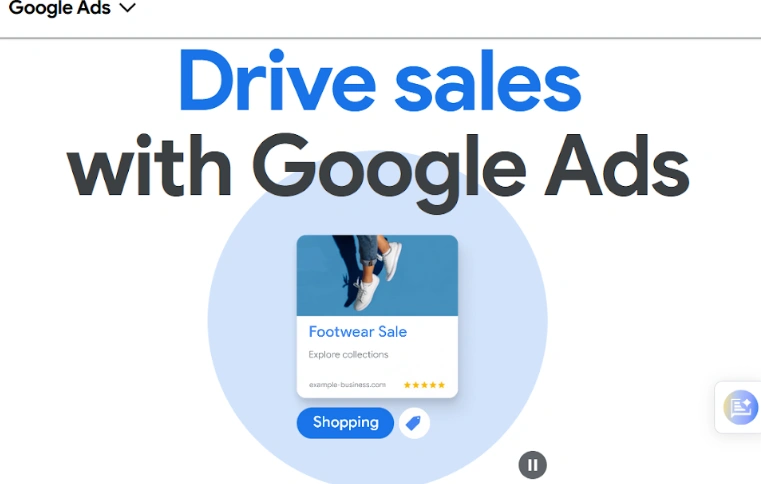
NO WAY THIS WILL HAPPEN
To the sceptic, I offer two proofs of the inevitability of this vision. First is that the technological capability for this is already here with its chief components: photorealistic avatar generation, voice cloning, personality emulation, contextual understanding, seamless video synthesis, etc., advancing at a rapid clip.
If there’s one lesson I can keyhole from history, it is that if a technology can be built and it promises power or profit, it will be built by those who already have power and profits. Advertising, a trillion-dollar global industry, offers both in spades.
Second, you must understand the true nature of Google and Meta. They’re not mere “tech companies”. Meta earned a staggering 97% of its total revenue from advertising in 2024. In the same period, Google saw nearly 78% of its colossal income from ads across its properties (Search, YouTube, etc.), with its Cloud division contributing a comparatively modest 10.8%.
Strip away the motto to organise the world’s information, VR headsets, promises to “connect the world”, and you find that their raison d’être is advertising. Every algorithm tweak, every AI breakthrough, and every user feature is ultimately in service of delivering more relevant, more engaging, and more effective ads. Hence, this automated ad creation isn’t a side project for Meta and Google; it’s the culmination of their core mission.
Just as Shah Rukh Khan became your local shopkeeper in 2021 and heralded hyper-localisation, we are at the start of the age of hyper-personification. The ads of tomorrow won’t just call out your name; they’ll wear your face, mimic your heroes, and strum to the unique frequency of your inner worlds. The future of advertising isn’t just personalised; it’s personified.
And the most unsettling truth in all this is how effortlessly our own digital reflections can be recruited to sell us what they want, via the creation of one perfectly tailored illusion after another.
The Cadbury ad was the first domino. Now, the whole intricate ad board is cascading into a reality stranger and more intimate than any fiction ever imagined.
In case you missed:
- Google Falters Under AI Onslaught: Future of Search in Peril?
- DeepSeek not the only Chinese model to upset AI-pple cart; here’s dozen more
- Beyond the Hype: The Spectacular, Stumbling Evolution of Digital Eyewear
- One Year of No-camera Filmmaking: How AI Rewrote Rules of Cinema Forever
- Face-Off: Denmark’s Copyright Move Against Deepfakes & the Ghost of Anil Kapoor
- AI Taken for Granted: Has the World Reached the Point of AI Fatigue?
- The Great Data Famine: How AI Ate the Internet (And What’s Next)
- AI’s Looming Catastrophe: Why Even Its Creators Can’t Control What They’re Building
- Microsoft’s Quantum Chip Majorana 1: Marketing Hype or Leap Forward?
- Greatest irony of the AI age: Humans being increasingly hired to clean AI slop
